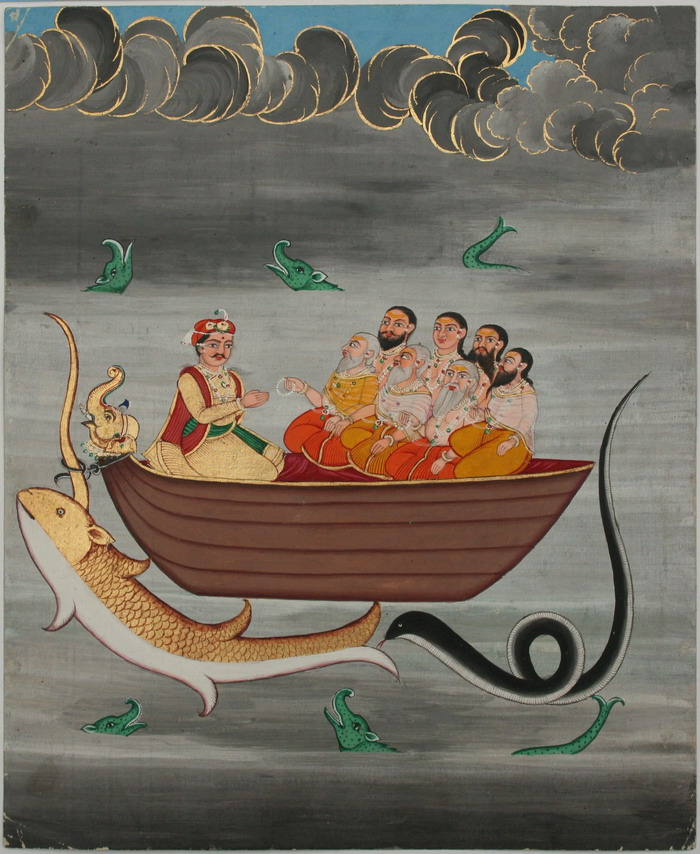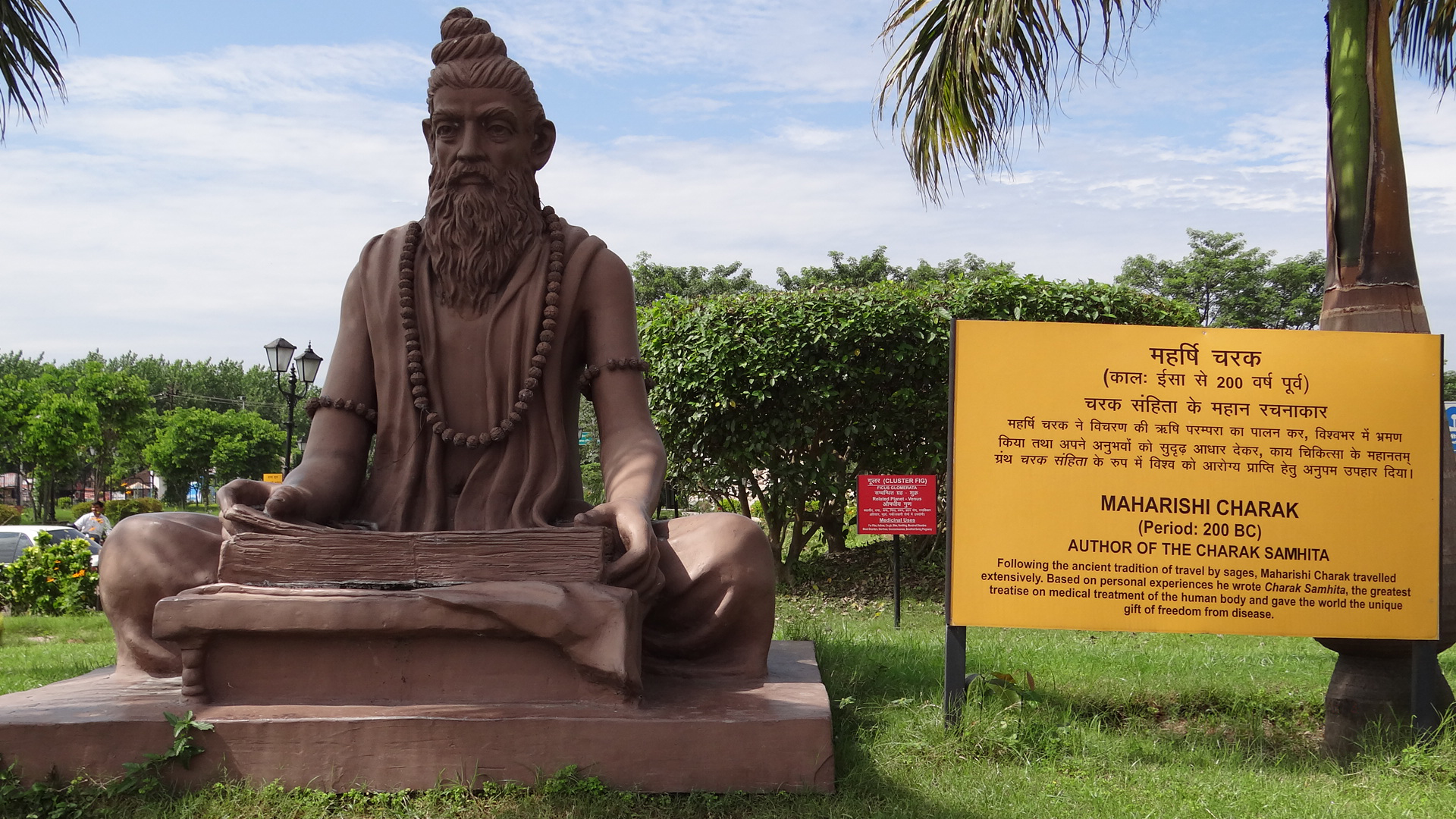|
Agniveśa
Agnivesha () is a legendary rishi (sage) in Hinduism, reputedly one of the earliest authors on Ayurveda (Indian alternative medicine). He is described to have codified the knowledge of his preceptor, Atreya, and arranged it in the form of a treatise, named the ''Charaka Samhita''. Legend Agnivesha is described to be the chief pupil of Punarvasu Atreya. The ''Agnivesha Samhita'', dated back to 1500 BCE, is based on Atreya's teachings, and is a lost text on Ayurveda. The Agniveśatantra, consisting of 12,000 verses, is stated to be the foundational text of the Agnivesha school, one of the six schools of early Ayurveda (others being Parashara, Harita, Bhela, Jatukarna, and Ksharpani). The text is mentioned in the ''Charaka Samhita'': "the tantra (Agnivesha) as written by Agnivesha is compiled, edited and modified by Charaka Charaka was one of the principal contributors to Ayurveda, a system of medicine and lifestyle developed in ancient India. He is known as a physician w ... [...More Info...] [...Related Items...] OR: [Wikipedia] [Google] [Baidu] |
Charaka Samhita
The ''Charaka Samhita'' () is a Sanskrit text on Ayurveda (Indian traditional medicine). Along with the '' Sushruta Samhita'', it is one of the two foundational texts of this field that have survived from ancient India. It is one of the three works that constitute the Brhat Trayi. The text is based on the Agnivesha Samhitā, an older encyclopedic medical compendium by Agniveśa. It was revised by Charaka between 100 BCE and 200 CE and renamed ''Charaka Samhitā''. The pre-2nd century CE text consists of 8 books and 120 chapters. It describes ancient theories on the human body, etiology, symptomology and therapeutics for a wide range of diseases. The ''Charaka Samhita'' also includes sections on the importance of diet, hygiene, prevention, medical education, and the teamwork of a physician, nurse and patient necessary for recovery to health. Authorship The ''Charaka Samhita'' states that the content of the book was first taught by Atreya, and then subsequently codified b ... [...More Info...] [...Related Items...] OR: [Wikipedia] [Google] [Baidu] |
Rishi
In Indian religions, a ''rishi'' ( ) is an accomplished and enlightened person. They find mention in various Vedic texts. Rishis are believed to have composed hymns of the Vedas. The Post-Vedic tradition of Hinduism regards the rishis as "great yogis" or "sages" who after intense meditation (Tapas (Sanskrit), tapas) realized the supreme truth and eternal knowledge, which they composed into hymns.Hartmut Scharfe (2002), Handbook of Oriental Studies, BRILL Academic, , pp. 13–15. The term appears in Pali literature as Ishi; in Buddhism they can be either Buddhas, Pratyekabuddha, Paccekabuddhas, Arhat, Arahats or a Buddhist monasticism, monk of high rank. Etymology According to Indian tradition, the word may be derived from two different meanings of the root 'rsh' (). Sanskrit grammarians derive this word from the second meaning: "to go, to move". V. S. Apte gives this particular meaning and derivation, and Monier-Williams also gives the same, with some qualification. Another ... [...More Info...] [...Related Items...] OR: [Wikipedia] [Google] [Baidu] |
Hinduism
Hinduism () is an Hypernymy and hyponymy, umbrella term for a range of Indian religions, Indian List of religions and spiritual traditions#Indian religions, religious and spiritual traditions (Sampradaya, ''sampradaya''s) that are unified by adherence to the concept of ''dharma'', a Ṛta, cosmic order maintained by its followers through rituals and righteous living, as expounded in the Vedas. The word ''Hindu'' is an exonym, and while Hinduism has been called the oldest religion in the world, it has also been described by the modern term ''Sanātana Dharma'' () emphasizing its eternal nature. ''Vaidika Dharma'' () and ''Arya dharma'' are historical endonyms for Hinduism. Hinduism entails diverse systems of thought, marked by a range of shared Glossary of Hinduism terms, concepts that discuss God in Hinduism, theology, Hindu mythology, mythology, among other topics in Hindu texts, textual sources. Hindu texts have been classified into Śruti () and Smṛti (). The major Hin ... [...More Info...] [...Related Items...] OR: [Wikipedia] [Google] [Baidu] |
Ayurveda
Ayurveda (; ) is an alternative medicine system with historical roots in the Indian subcontinent. It is heavily practised throughout India and Nepal, where as much as 80% of the population report using ayurveda. The theory and practice of ayurveda is pseudoscientific and toxic metals including lead and Mercury (element), mercury are used as ingredients in many ayurvedic medicines. Ayurveda therapies have varied and evolved over more than two millennia. Therapies include herbal medicines, Dieting#Detox, special diets, Meditation#Hinduism, meditation, yoga, massage, Laxative#Historical and health fraud uses, laxatives, Enema#Alternative medicine, enemas, and medical oils. Ayurvedic preparations are typically based on complex herbal compounds, minerals, and metal substances (perhaps under the influence of early Indian alchemy or ''rasashastra''). Ancient ayurveda texts also taught surgical techniques, including rhinoplasty, lithotomy, sutures, cataract surgery, and the extraction ... [...More Info...] [...Related Items...] OR: [Wikipedia] [Google] [Baidu] |
Atreya
Atreya or Atreyas (आत्रेय) Rishi, or Atreya Punarvasu, was a descendant of Atri, one of the great Hindu sages (rishis) whose accomplishments are detailed in the Puranas. Sage Atreya was a renowned scholar of Ayurveda, and a school of early Ayurveda was founded based on his teachings. Some historians of Ayurveda date Atreya to 6th century BCE, and theorize that he was the personal physician of the Gandhara king Nagnajita. The Buddhist text '' Mulasarvastivada-Vinayavastu'' describes him as the teacher of Jivaka, the personal physician of the Buddha, and connects him to Takshashila in Gandhara. The oldest portions of the '' Bhela Samhita'' and the ''Charaka Samhita'' represent a consolidation of Atreya's teachings. The ''Bhela Samhita'' is in form of a dialogue between Atreya and his pupil Bhela. The original contents of ''Charaka Samhita'' are credited to Atreya, which were in turn codified and edited by Agnivesha and Charaka. According to Surendranath Dasgupta, The ... [...More Info...] [...Related Items...] OR: [Wikipedia] [Google] [Baidu] |
Parashara
Parashara (Sanskrit: पराशर; IAST: ) was a maharishi and the author of many ancient Hindu texts. He is accredited as the author of the first Purana, the Vishnu Purana, before his son Vyasa wrote it in its present form. He was the grandson of the sage Vasishtha and the son of the sage Shakti. There are several texts which give reference to Parashara as an author/speaker. The various texts attributed to him are given in reference to Parashara being the speaker to his student. Etymology When Parashara's father Shakti died after being devoured by the king Kalmashapada along with Vashistha's other sons, Vashistha resorted to ending his life by suicide. Hence he jumped from Mount Meru but landed on soft cotton, he entered a forest fire only to remain unharmed, then he jumped into the ocean who saved him by casting him ashore. Then he jumped in the overflowing river Vipasa, which also left him ashore. Then he jumped into the river Haimavat, which fled in several dire ... [...More Info...] [...Related Items...] OR: [Wikipedia] [Google] [Baidu] |
Bhela
Bhela Samhita (IAST: Bhela-saṃhitā, "Compendium of Bhela") is a Sanskrit-language medical text from ancient India. It is known from an incomplete c. 1650 CE manuscript kept at the Sarasvati Mahal Library in Thanjavur, and a c. 9th century fragment found at Tuyoq. Quotations in other works suggest that an older version of the text, possibly composed during 400-750 CE, existed. Much of the text is in form of a dialogue between sage Atreya and his pupil Bhela, the author of the text. It shows many similarities with the ''Charaka Samhita'', another text of the Atreya school, but it also shows some similarities with the ''Sushruta Samhita'' of the Dhanavantri school. Authorship The text is primarily in form of a dialogue between the sage Atreya and his pupil Bhela (also called Bheḍa). However, several other people also talk to Atreya in the text, including: * the royal sage Nagnajit, who asks Atreya questions about detecting poison in food * Gurdalu Bhekin, who asks Atreya a ... [...More Info...] [...Related Items...] OR: [Wikipedia] [Google] [Baidu] |
Charaka
Charaka was one of the principal contributors to Ayurveda, a system of medicine and lifestyle developed in ancient India. He is known as a physician who edited the medical treatise entitled ''Charaka Samhita'', one of the foundational texts of classical Indian medicine and Ayurveda, included under Brhat Trayi, Brhat-Trayi. Charaka, also known as Charak acharya, was an ancient Indian physician and scholar who made significant contributions to the field of Ayurveda. Ayurveda is a traditional system of medicine that originated in Indian subcontinent. Charaka is believed to have lived during the 4th century BCE, although the exact dates of his birth and death are uncertain. He is considered one of the principal contributors to the Charaka Samhita, an ancient Ayurvedic text that is one of the foundational texts of Ayurvedic medicine. The Charaka Samhita is a comprehensive treatise on various aspects of medicine, including etiology, diagnosis, treatment, and ethical considerations. ... [...More Info...] [...Related Items...] OR: [Wikipedia] [Google] [Baidu] |
Rishis
In Indian religions, a ''rishi'' ( ) is an accomplished and enlightened person. They find mention in various Vedic texts. Rishis are believed to have composed hymns of the Vedas. The Post-Vedic tradition of Hinduism regards the rishis as "great yogis" or "sages" who after intense meditation ( tapas) realized the supreme truth and eternal knowledge, which they composed into hymns.Hartmut Scharfe (2002), Handbook of Oriental Studies, BRILL Academic, , pp. 13–15. The term appears in Pali literature as Ishi; in Buddhism they can be either Buddhas, Paccekabuddhas, Arahats or a monk of high rank. Etymology According to Indian tradition, the word may be derived from two different meanings of the root 'rsh' (). Sanskrit grammarians derive this word from the second meaning: "to go, to move". V. S. Apte gives this particular meaning and derivation, and Monier-Williams also gives the same, with some qualification. Another form of this root means "to flow, to move near by flowi ... [...More Info...] [...Related Items...] OR: [Wikipedia] [Google] [Baidu] |



